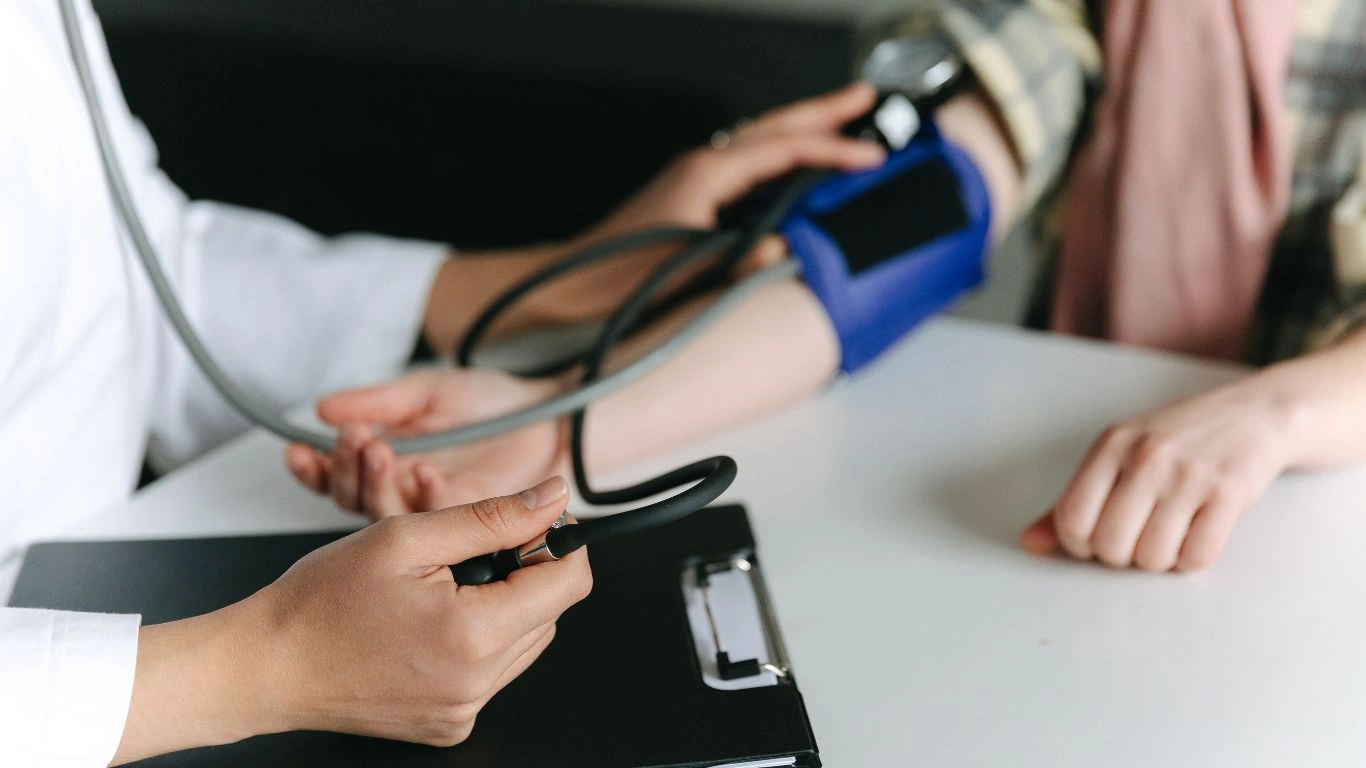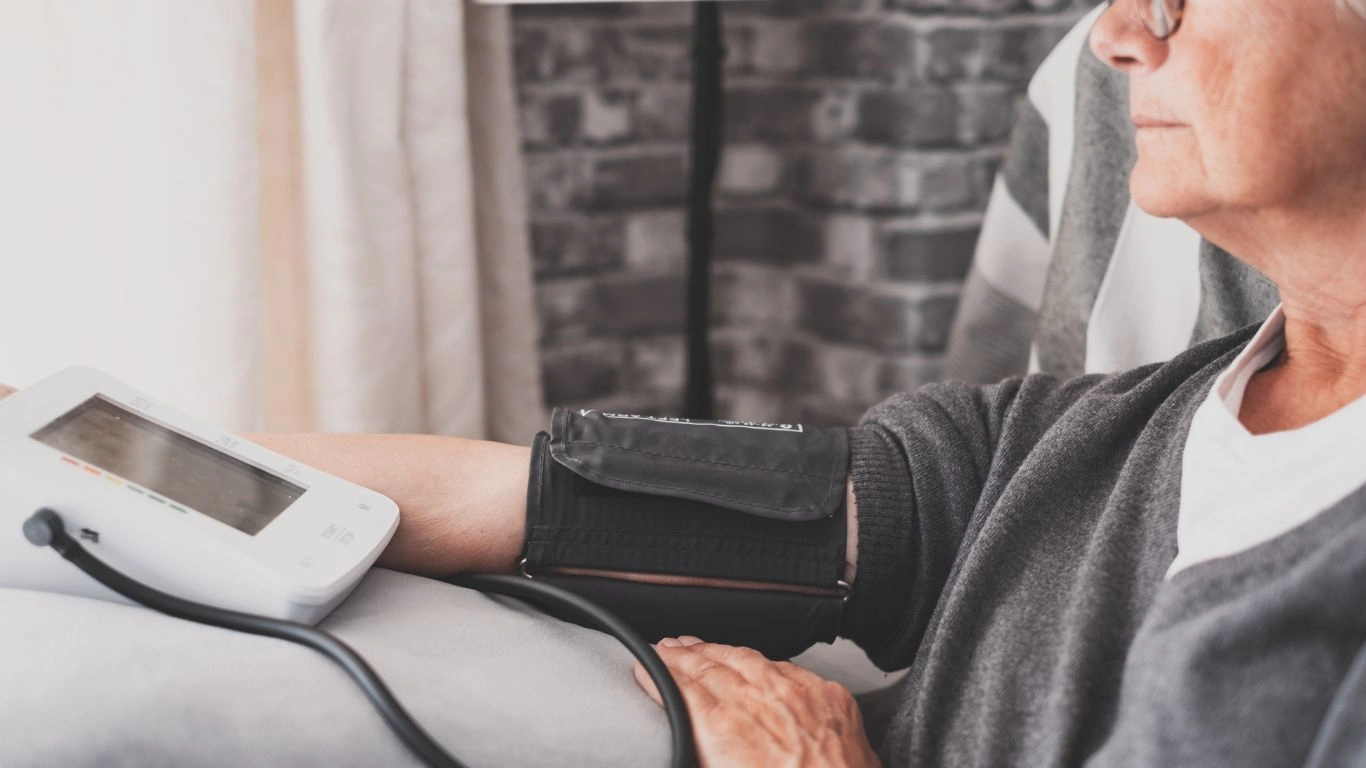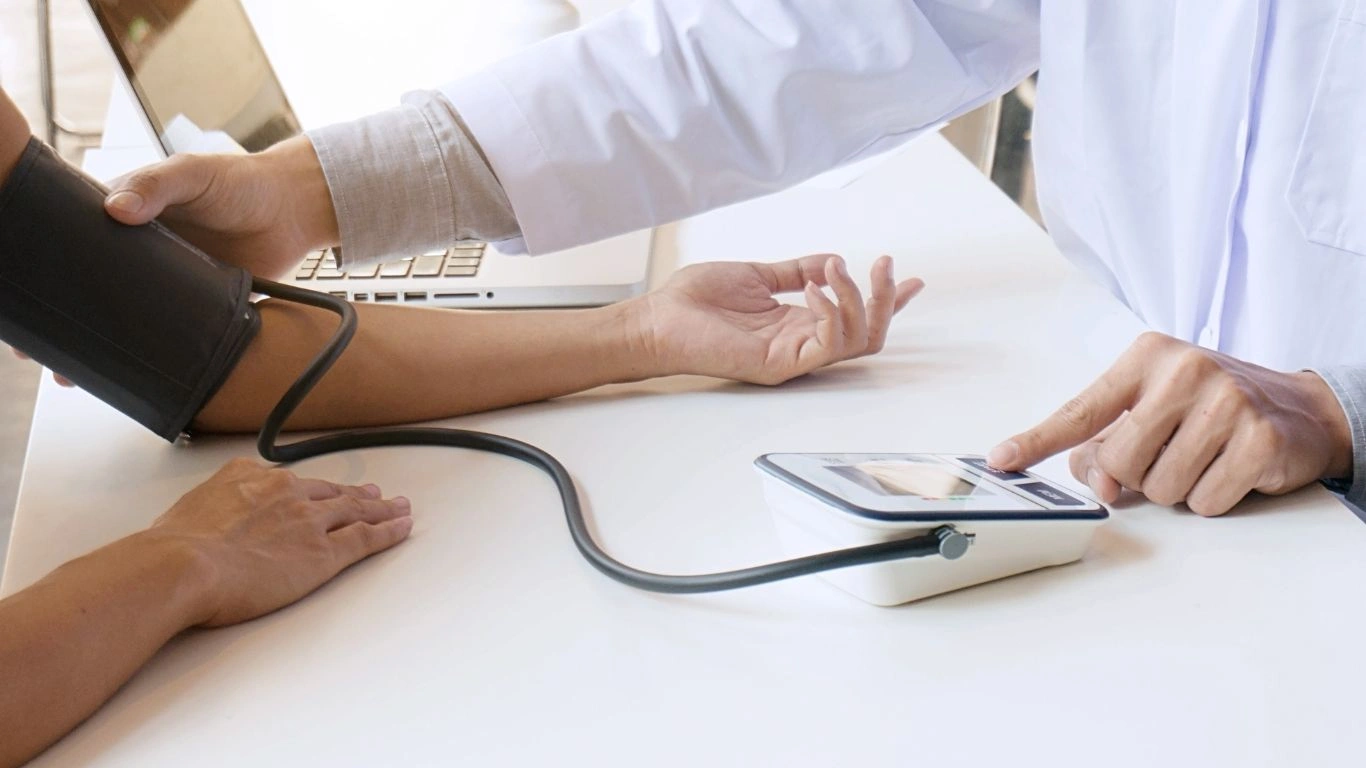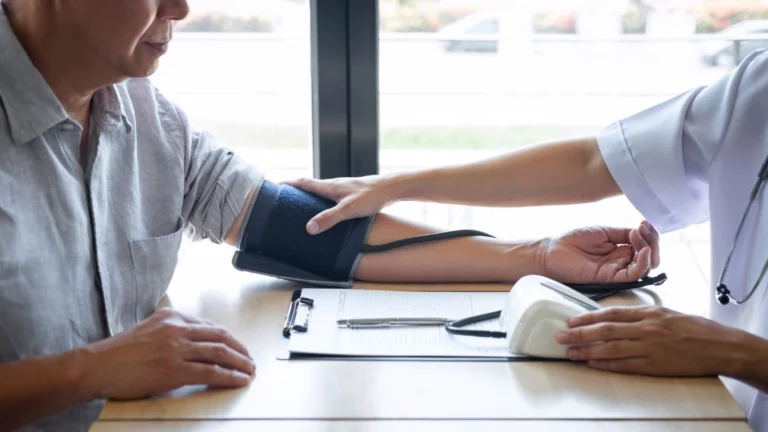How to Safely Exercise with High Blood Pressure for Better Health
If you have high blood pressure, or hypertension, you may be wondering how to safely exercise with high blood pressure. The good news is, staying active is one of the most effective ways to manage hypertension and improve overall health. But, of course, safety comes first. As someone who has worked with many individuals managing hypertension, I can tell you that the right approach to exercise can make a world of difference. In this article, I’ll guide you through practical tips and insights based on my experience to help you incorporate safe exercise routines into your lifestyle, even with high blood pressure. So, let’s dive into it!
Why Exercise is Crucial for Managing High Blood Pressure

Exercise is more than just a way to stay fit; it’s a vital part of managing high blood pressure. When you work out regularly, you can lower your blood pressure and reduce your risk of developing heart disease, stroke, and other related conditions. In fact, studies show that even light to moderate exercise can significantly help in reducing both systolic and diastolic blood pressure.
But here’s the thing—if you have hypertension, it’s essential to exercise safely. Overdoing it or engaging in the wrong type of activity could put your health at risk. That’s why it’s crucial to have a solid understanding of how to tailor exercise routines to your unique needs. Exercise can be a game-changer for managing high blood pressure, but only if you approach it correctly!
What Happens to Your Blood Pressure When You Exercise?
Before diving into the specifics of safe exercises for high blood pressure, let’s first understand what happens to your body when you exercise. When you engage in physical activity, your heart rate increases, and your blood pressure rises temporarily. This is normal, and it’s your body’s way of delivering more oxygen to your muscles. However, as you continue to work out, your blood vessels expand to accommodate the increased blood flow, which helps in reducing the strain on your heart.
Over time, regular exercise leads to long-term reductions in resting blood pressure. This means that even when you’re not actively working out, your heart doesn’t have to work as hard to pump blood, which is especially beneficial for people with hypertension.
Consult with Your Healthcare Provider First

Before starting any exercise program, it’s important to consult your doctor, especially if you have high blood pressure. They will assess your health, blood pressure levels, and overall fitness to recommend the best types of exercises and safe limits for you. This step is essential for creating an exercise routine that won’t worsen your condition.
During your consultation, make sure to discuss:
- Any medications you are currently taking for hypertension.
- Your overall fitness level and any other medical conditions that may affect your ability to exercise.
- Your target blood pressure range and how to monitor it during workouts.
Once you have your doctor’s approval, it’s time to get moving! But remember, every individual is different, and what works for one person may not work for another. That’s why personalized advice is key to maintaining safe and effective exercise habits.
What Types of Exercise Are Safe for High Blood Pressure?
When it comes to high blood pressure, not all exercises are created equal. Some activities might put unnecessary stress on your heart and blood vessels, while others can actually help reduce blood pressure over time. Let’s look at some of the best options that are safe and beneficial.
1. Aerobic Exercise (Cardio)
Aerobic exercises, also known as cardio, are some of the best exercises for lowering blood pressure. These include activities like walking, swimming, cycling, and light jogging. Regular aerobic exercise helps strengthen the heart and improves circulation, which directly impacts blood pressure levels.
If you’re just starting out, walking is a fantastic choice. It’s gentle on the joints and can be done anywhere. Aim for at least 30 minutes of brisk walking most days of the week to see noticeable improvements in your blood pressure.
2. Strength Training
Contrary to what you might think, strength training can also be beneficial for managing high blood pressure. Lifting weights helps to build muscle mass, which increases your metabolism and helps with weight management—both of which contribute to better blood pressure control.
However, when engaging in strength training, make sure to avoid holding your breath or doing intense heavy lifts. This can cause a dangerous spike in blood pressure. Instead, focus on lighter weights with more repetitions to avoid stressing your heart.
3. Flexibility and Balance Exercises
Incorporating flexibility exercises like yoga or Pilates can also benefit individuals with high blood pressure. These activities help reduce stress, improve circulation, and increase overall body flexibility. Stress is a known trigger for high blood pressure, so activities that promote relaxation are key. Yoga, in particular, can help with both physical flexibility and mental relaxation, which makes it an excellent addition to your exercise routine.
Remember, the key is consistency. While you may not see dramatic changes in your blood pressure overnight, a regular exercise routine will make a noticeable difference over time. And always keep in mind that staying active doesn’t just help with your blood pressure, it boosts your mood, increases energy, and improves overall well-being.
How to Safely Monitor Your Blood Pressure While Exercising

One of the most important aspects of exercising with high blood pressure is monitoring how your body responds. This helps ensure that your blood pressure stays within a safe range throughout the workout. A few simple methods can keep you in the know:
- Use a Blood Pressure Monitor: Investing in a portable blood pressure cuff can be a game-changer. You can check your blood pressure before, during, and after exercise to track how your body is responding. Aim for a blood pressure under 160/100 during physical activity, but always follow your doctor’s guidelines.
- Pay Attention to Symptoms: If you experience dizziness, chest pain, or shortness of breath while exercising, stop immediately. These could be signs that your blood pressure has spiked too high. Contact your healthcare provider if you notice any unusual symptoms during or after exercise.
By staying informed and listening to your body, you can exercise with confidence and keep your blood pressure within a healthy range. Just remember that gradual progress is key. Start slow, listen to your body, and consult with your doctor regularly to ensure that your exercise routine remains both safe and effective.
How to Build a Safe Exercise Routine for High Blood Pressure

Now that we’ve covered the basics of why exercise is so important for managing high blood pressure and the types of activities that work best, let’s talk about how to actually build a routine. If you’re wondering how to safely exercise with high blood pressure without overdoing it, the key is to start slow and focus on consistency.
From my experience working with people dealing with hypertension, I know that many feel overwhelmed when they first think about starting a new fitness routine. It can be difficult to know where to begin or what intensity level is safe. The good news is, it doesn’t have to be complicated. A well-structured routine doesn’t have to include hours of intense gym sessions. What matters is creating a plan that is gradual, sustainable, and effective for your unique needs.
Start Slow and Build Gradually
If you’ve been inactive or have recently been diagnosed with high blood pressure, it’s important not to rush into high-intensity exercises. Start with gentle movements and gradually increase the intensity over time. Think of it like building a foundation for your fitness journey. You don’t have to start running a marathon right away, but incorporating short, manageable sessions of activity will have a huge impact in the long run.
Start with low-impact exercises like walking, cycling, or swimming. These are great because they’re easy on your joints and don’t put too much stress on your cardiovascular system. A 10- to 15-minute walk at a comfortable pace is an excellent place to start. Once you feel more comfortable and your endurance improves, you can slowly increase the duration and intensity of your sessions.
Mix Up Cardio, Strength, and Flexibility
When building your exercise plan, it’s a good idea to combine different types of exercise to keep things interesting and target different aspects of your health. The combination of cardio, strength training, and flexibility exercises provides a well-rounded approach to managing high blood pressure.
Cardiovascular exercise should be the cornerstone of your routine. Aim for at least 150 minutes of moderate-intensity aerobic activity per week, which can be split up into 30-minute sessions, five days a week. You could do this with activities like brisk walking, swimming, or cycling. But don’t forget that any movement counts, even if it’s just walking around the house or doing light chores.
Strength training is also crucial for long-term health. It’s great for boosting metabolism, maintaining muscle mass, and improving your body’s ability to burn fat. Start with simple bodyweight exercises like squats, lunges, and modified push-ups. As you get stronger, you can add light weights or resistance bands. The goal is to do strength training at least twice a week, but be sure to give your muscles time to recover between sessions.
And don’t skip flexibility exercises like yoga or stretching. Not only do these exercises help improve flexibility and balance, but they also help manage stress levels, which is important for lowering blood pressure. I’ve found that activities like yoga can be incredibly effective in calming the mind and reducing anxiety, which in turn helps with hypertension management.
How to Safely Increase Exercise Intensity

Once you’ve built a solid foundation and are comfortable with your routine, the next step is to increase the intensity in a safe and controlled way. This is where many people go wrong. It’s tempting to push yourself harder, thinking that more exercise will give you faster results. But, if you increase intensity too quickly, it can lead to injury, overexertion, or spikes in your blood pressure. So, how can you safely increase the intensity of your workouts without risking your health?
Pay Attention to Your Body
Your body will always give you feedback, and it’s important to listen to it. If you feel lightheaded, dizzy, or experience shortness of breath, it’s essential to stop immediately and check your blood pressure. It’s also a good idea to monitor how your blood pressure responds to exercise using a blood pressure monitor, especially when you begin intensifying your workouts. I recommend checking your blood pressure before, during, and after exercise to see how your body is reacting.
As you progress, you can gradually increase the intensity of your workouts in small increments. For example, you can increase the speed of your walk, add more resistance to your strength training, or extend the duration of your workout. These small changes allow your body to adjust without overwhelming your cardiovascular system.
Interval Training: A Great Option for Hypertension
One safe and effective way to increase exercise intensity for high blood pressure is through interval training. Interval training involves alternating between periods of higher-intensity exercise and lower-intensity recovery. This method can improve cardiovascular fitness without overburdening your heart, which is perfect for those managing hypertension.
For instance, you could walk briskly for 3-5 minutes, followed by 1-2 minutes of faster walking or light jogging. Alternate between these two levels of intensity for 20-30 minutes, depending on your comfort level. Interval training is an efficient way to improve fitness and burn fat, and it has been shown to be effective in lowering blood pressure over time.
Remember, the goal isn’t to become a professional athlete overnight; it’s about making gradual improvements to your cardiovascular health. Consistency is the key, so make sure you’re comfortable with the pace you’ve set and only increase intensity when you feel ready.
Tips for Staying Motivated and Consistent
We all know that staying motivated can be one of the biggest challenges when it comes to regular exercise. When you’re dealing with high blood pressure, maintaining a consistent workout routine is even more important for your health. So how can you stay on track with your exercise plan?
- Set Realistic Goals: Don’t set yourself up for failure by aiming too high. Start with small, achievable goals like “I’ll walk for 10 minutes today” and work your way up. This approach makes it easier to stay consistent and celebrate small wins along the way.
- Find Activities You Enjoy: Exercise shouldn’t feel like a chore. Choose activities that you love, whether it’s swimming, hiking, or dancing. When you enjoy what you’re doing, it’s easier to stick with it in the long run.
- Track Your Progress: Keep a journal or use a fitness app to track your workouts. Seeing your progress over time, like improvements in endurance or lower blood pressure readings, will motivate you to continue.
In my experience, making exercise a part of your daily routine—something that you look forward to—can be one of the most rewarding parts of managing high blood pressure. When you see the positive impact it has on your health, you’ll be motivated to keep going.
Important Considerations for Exercising with High Blood Pressure

By now, you’re probably feeling much more confident about how to exercise safely with high blood pressure. But before you lace up your shoes and hit the pavement, there are a few important considerations to keep in mind. These will help ensure you stay safe while getting the most out of your workouts.
Throughout my career, I’ve seen many individuals with hypertension make great strides with their health by staying active. However, I’ve also noticed a few common pitfalls that can slow down progress or cause unnecessary risks. By staying informed and following these guidelines, you’ll set yourself up for success in managing your blood pressure through exercise.
Monitor Your Blood Pressure Regularly
One of the most important things you can do is to consistently monitor your blood pressure. As we mentioned earlier, exercise can cause temporary spikes in blood pressure, but it can also help lower it over time. That’s why keeping an eye on your blood pressure before, during, and after exercise is critical for tracking how your body responds to different activities.
I always recommend investing in a good-quality blood pressure monitor that you can use at home. This will allow you to stay on top of your numbers without needing to visit the doctor for frequent check-ups. If you notice your blood pressure spiking significantly during or after a workout, it’s time to reevaluate your routine or consult with your healthcare provider. Tracking your blood pressure regularly will also help you identify patterns, so you can tweak your exercise plan accordingly.
Stay Hydrated
Hydration is crucial for everyone, but especially for those with high blood pressure. Dehydration can cause your blood pressure to rise, making it harder for your heart to pump blood efficiently. It can also lead to dizziness and fatigue, which could increase your risk of injury during exercise.
Drinking water before, during, and after exercise helps keep your heart and blood vessels functioning well. A general rule of thumb is to drink about 8 ounces of water every 20 minutes during physical activity. Of course, the amount you need may vary depending on the intensity of the workout and the temperature, so listen to your body and drink whenever you feel thirsty.
Avoid Overexertion
It’s tempting to push yourself harder, especially when you start to feel stronger and more confident. However, if you overdo it, you could risk pushing your blood pressure to unsafe levels. One of the key aspects of how to safely exercise with high blood pressure is learning when to stop or scale back. Overexertion can lead to dizziness, headaches, or even more serious health issues like heart strain or a stroke.
Always remember that exercising with high blood pressure isn’t about going as hard as you can. It’s about being consistent and making gradual progress. If you’re unsure whether you’re pushing yourself too much, a good guideline is the “talk test.” If you’re unable to talk comfortably while exercising, you’re probably pushing too hard. Keep the intensity moderate and take breaks as needed.
When to Stop Exercising

It’s equally important to know when to stop exercising, especially if you experience any unusual symptoms. I’ve worked with many patients who initially ignored warning signs, only to realize they were pushing their bodies beyond what was safe. Being aware of your body and recognizing red flags can help prevent dangerous situations.
- Chest pain: If you experience any type of chest discomfort or pain, stop exercising immediately. This could be a sign of a serious heart problem, and you should seek medical attention right away.
- Shortness of breath: Difficulty breathing or feeling winded even during low-intensity activity may indicate that your heart is under stress. It’s crucial to slow down and reassess your intensity level.
- Dizziness or lightheadedness: Feeling faint or lightheaded is a sign that your blood pressure may have dropped too low or spiked too high. If this happens, stop exercising and rest until you feel better.
- Severe headaches: A headache during or after exercise can indicate high blood pressure or that you’re exerting yourself too much. It’s always a good idea to stop and check your blood pressure if this happens.
If you notice any of these symptoms, it’s best to consult your healthcare provider before continuing with your exercise routine. Safety always comes first!
Diet and Lifestyle Changes to Complement Exercise
Exercise is incredibly important for managing high blood pressure, but it’s not the only factor that contributes to better blood pressure control. Pairing a well-rounded fitness routine with a heart-healthy diet and healthy lifestyle choices can help you see even greater improvements in your blood pressure and overall health.
A balanced diet rich in fruits, vegetables, whole grains, lean proteins, and healthy fats can help lower blood pressure. The DASH (Dietary Approaches to Stop Hypertension) diet, which focuses on reducing sodium intake and increasing potassium-rich foods, is especially beneficial for those managing hypertension.
Limiting alcohol and quitting smoking are also crucial steps in managing high blood pressure. Both smoking and excessive alcohol consumption can raise blood pressure, so cutting back on these habits is essential for long-term health. Additionally, stress management is key. Chronic stress is a significant contributor to high blood pressure, and incorporating relaxation techniques such as deep breathing, meditation, or mindfulness can make a big difference.
References and Disclaimer
For more information on hypertension management and safe exercise practices, I encourage you to check out the following resources:
- CDC – Hypertension and Stroke for detailed information on the effects of high blood pressure on your health.
- American Heart Association for guidance on heart-healthy living and exercise recommendations.
Disclaimer: The information provided in this article is for educational purposes only and should not be considered medical advice. Always consult with your healthcare provider before beginning any new exercise program, especially if you have high blood pressure or any other health conditions. Exercise routines and recommendations should be tailored to your individual health needs.

Dr. Gwenna Aazee is a board-certified Internal Medicine Physician with a special focus on hypertension management, chronic disease prevention, and patient education. With years of experience in both clinical practice and medical writing, she’s passionate about turning evidence-based medicine into accessible, actionable advice. Through her work at Healthusias.com, Dr. Aazee empowers readers to take charge of their health with confidence and clarity. Off the clock, she enjoys deep dives into nutrition research, long walks with her rescue pup, and simplifying medical jargon one article at a time.






